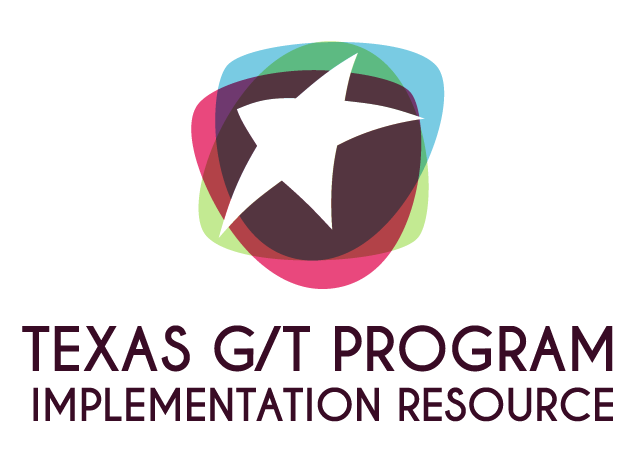Principal
The role of the principal:
The principal is the instructional leader of the campus. After the school district has a locally developed gifted/talented (G/T) program that meets the requirements outlined in law and is approved by the local board of trustees, the principal, through collaboration with the staff, ensures that the students are identified and served.
1. How to identify G/T students in your school and ensure all populations are represented
The principal’s role is to support the G/T coordinators and teachers of the gifted in their efforts to locate instruments that allow the district to identify students to reflect the population of the district.
Student Assessment Documents and Procedures
2. How to design and deliver the program to assure quality instruction
Limited time, personnel, and financial resources can be overcome only by the willingness of the instructional leader to be a creative problem solver.
Responsibility for developing quality instruction for the gifted student is shared by the local administrators, teachers delivering gifted services, and regular classroom teachers. Parents are informed of the array of learning opportunities provided for their students. Many districts utilize parent letters/newsletters sent on a monthly basis to ensure parents are well-informed and supportive of the school and its G/T program.
The campus administrator is instrumental in evaluating the quality of locally developed programs and the effectiveness of the services provided to gifted students. The campus plan is an effective tool for implementing best practices. Administrators who: 1) observe classroom instruction, 2) review lesson plans that correlate to the articulated curriculum, 3) enable teachers to select workshops or plan training to meet individual teachers’ needs, and 4) provide instructional resources create a desire for continuous improvement.
Service Design Documents and Procedures
Family Community Involvement Documents and Procedures
3. What is taught, what resources are used, and what curriculum is implemented
Time and the lack of personnel and financial resources often make curriculum development for the gifted program feel like an overwhelming task.
Program design and the students who are identified to participate drive the development of the curriculum. Curriculum development must be completed or created locally to ensure that the program is implemented to meet the needs of gifted students targeted for service. Without articulated curriculum and instruction, the district cannot provide consistency across grade levels and campuses.
The principal can ensure personnel have the time and opportunity for vertical team planning. Administrators can explore options for enabling teachers to develop local curriculum. Options included, but are not limited to, release time, summer writing sessions, flexible conference periods, and using the TPSP framework for learning experiences. These resources are generally more cost effective than purchasing commercial curriculum products.
Curriculum Documents and Procedures
4. How to ensure quality instruction
Each participating school shared that the strength of their gifted program was that it was systemic as opposed to teacher (institution) driven. Board-approved policies and procedures was the one item that helped a program survive when there was change in the institution.
The schools stressed professional development for both the designated teachers of the gifted and the rest of the staff. In a small school, jobs change each year depending on the school’s needs. Another strong strand was administrative leadership and support of the program, as well as parent/community support.
Family Community Involvement Documents and Procedures
5. How to institutionalize the program so it is not dependent on a gifted instructor/coordinator
Particularly in small school districts, the gifted program is frequently one person’s responsibility. Even a program of superb quality can be weakened or lost if this key person leaves the program or district.
Detailed written procedures and policies, detailed forms, active parent involvement, strong administrative leadership and support, and thorough professional development all support a systemic approach to services. If administrators and key personnel have access to policies and procedures that are board approved and community endorsed, program services continue for students despite changes in staff.
Quick Links
Texas Education Agency, Gifted Talented Education
http://tea.texas.gov
Texas Performance Standards Project
http://www.texaspsp.org/
Equity in G/T
https://gtequity.tea.texas.gov/
Regional Education Service Centers
http://tea.texas.gov/regional_
